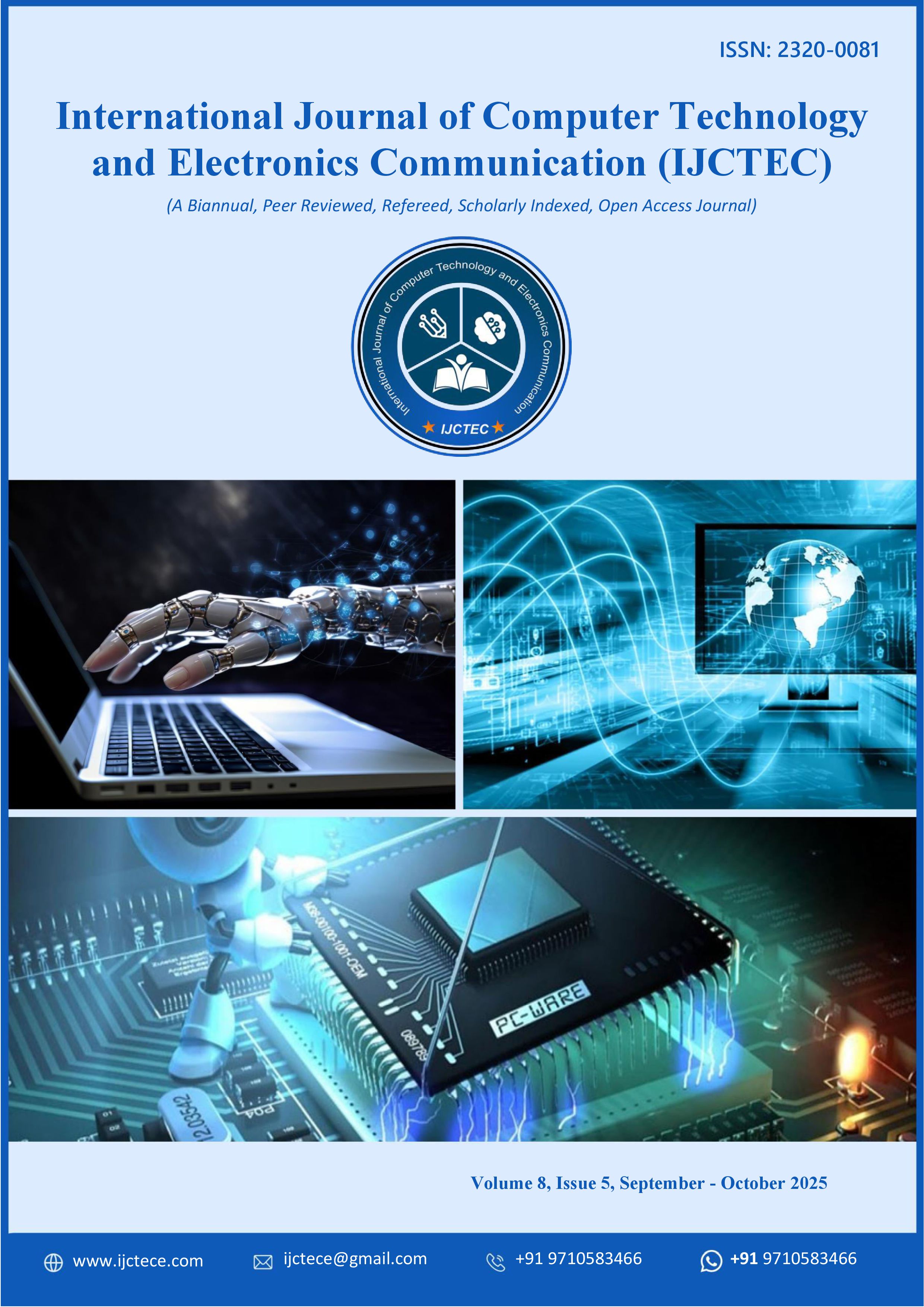Generative Agents at Scale: A Practical Guide to Migrating from Dialog Trees to LLM Frameworks
DOI:
https://doi.org/10.15680/IJCTECE.2025.0805010Keywords:
Generative AI, Large Language Models, Digital Virtual Agents, Conversational AI, Migration Strategy, Dialog Management, Enterprise AI, Healthcare IT, FinTech, Telecommunications, AI Deployment, Practical Guide, IEEE StandardsAbstract
The rapid advancements in Large Language Models (LLMs) are fundamentally transforming conversational AI, enabling the development of more flexible, context-aware, and human-like Digital Virtual Agents (DVAs). While traditional dialog tree-based systems have served as the backbone for many enterprise chatbots, their inherent rigidity and maintenance overhead limit scalability and user experience in complex scenarios. Migrating from these rule-based systems to LLM-driven frameworks presents significant technical and operational challenges, particularly at scale and within highly regulated industries like healthcare, finance, and telecommunications. This paper provides a practical guide for organizations undertaking this migration. We analyze the limitations of dialog trees, the capabilities introduced by LLMs, and propose a structured migration methodology encompassing assessment, planning, phased implementation, testing, and ongoing governance. The paper details practical strategies for leveraging LLM frameworks while maintaining control, ensuring accuracy, managing security and privacy, and integrating with existing enterprise systems. We discuss industry-specific considerations, drawing insights from real-world challenges and widely adopted approaches in healthcare, finance, and telecom. The aim is to equip practitioners with a clear understanding of the steps, considerations, and technical approaches necessary to successfully transition to scalable, intelligent, and effective generative agent architectures.
References
1. Rawal, A., McCoy, J., Rawat, D.B., Sadler, B.M. and Amant, R.S., 2021. Recent advances in trustworthy explainable artificial intelligence: Status, challenges, and perspectives. IEEE Transactions on Artificial Intelligence, 3(6), pp.852-866.
2. Pradhan, Dr. Rashmiranjan. “Establishing Comprehensive Guardrails for Digital Virtual Agents: A Holistic Framework for Contextual Understanding, Response Quality, Adaptability, and Secure Engagement.” International Journal of Innovative Research in Computer and Communication Engineering, 2025. doi:10.15680/IJIRCCE.2025.1307013.
3. Pradhan, D. R. RAGEvalX: An Extended Framework for Measuring Core Accuracy, Context Integrity, Robustness, and Practical Statistics in RAG Pipelines. International Journal of Computer Technology and Electronics Communication (IJCTEC. https://doi.org/10.15680/IJCTECE.2025.0805001
4. Pradhan, D. R. (2025). RAG vs. Fine-Tuning vs. Prompt Engineering: A Comparative Analysis for Optimizing AI Models. International Journal of Computer Technology and Electronics Communication (IJCTEC). https://doi.org/10.15680/IJCTECE.2025.0805004
5. Pradhan, Rashmiranjan, and Geeta Tomar. "AN ANALYSIS OF SMART HEALTHCARE MANAGEMENT USING ARTIFICIAL INTELLIGENCE AND INTERNET OF THINGS.". Volume 54, Issue 5, 2022 (ISSN: 0367-6234). Article history: Received 19 November 2022, Revised 08 December 2022, Accepted 22 December 2022. Harbin Gongye Daxue Xuebao/Journal of Harbin Institute of Technology.
6. Pradhan, Rashmiranjan. “AI Guardian- Security, Observability & Risk in Multi-Agent Systems.” International Journal of Innovative Research in Computer and Communication Engineering, 2025. doi:10.15680/IJIRCCE.2025.1305043.
7. Pradhan, D. R. (no date) “RAGEvalX: An Extended Framework for Measuring Core Accuracy, Context Integrity, Robustness, and Practical Statistics in RAG Pipelines,” International Journal of Computer Technology and Electronics Communication (IJCTEC. doi: 10.15680/IJCTECE.2025.0805001.
8. Rashmiranjan, Pradhan Dr. "Empirical analysis of agentic ai design patterns in real-world applications." (2025).
9. Pradhan, Rashmiranjan, and Geeta Tomar. "IOT BASED HEALTHCARE MODEL USING ARTIFICIAL INTELLIGENT ALGORITHM FOR PATIENT CARE." NeuroQuantology 20.11 (2022): 8699-8709.
10. Rashmiranjan, Pradhan. "Contextual Transparency: A Framework for Reporting AI, Genai, and Agentic System Deployments across Industries." (2025).
11. Vaswani, A., Shazeer, N., Parmar, N., Uszkoreit, J., Jones, L., Gomez, A. N., ... & Polosukhin, I. (2017). Attention Is All You Need. Neural Information Processing Systems (NIPS).
12. Devlin, J., Chang, M. W., Lee, K., & Toutanova, K. (2018). BERT: Pre-training of Deep Bidirectional Transformers for Language Understanding. arXiv preprint arXiv:1810.04805.
13. Lewis, P., Yih, W. T., Pihur, V., Lewis, K., Simig, D., Koren, N., ... & Riedel, S. (2020). Retrieval-Augmented Generation for Knowledge-Intensive NLP Tasks. Advances in Neural Information Processing Systems (NeurIPS).
14. Brown, T. B., Mann, B., Ryder, N., Subbiah, M., Kaplan, J., Dhariwal, P., ... & Amodei, D. (2020). Language Models are Few-Shot Learners. Advances in Neural Information Processing Systems (NeurIPS).
15. Mosbah, S., & Driss, M. (2024). Comparative Analysis of RAG Fine-Tuning and Prompt Engineering in Chatbot Development. Available via platforms that index research, potentially including IEEE.
16. Gao, Y., Ma, X., Zhou, J., Yan, Y., Zhang, J., Liu, S., ... & Li, H. (2024). Retrieval-Augmented Generation for Large Language Models: A Survey. arXiv preprint arXiv:2312.10997.
17. Lester, B., Al-Rfou, R., & Constant, N. (2021). The Power of Scale for Parameter-Efficient Fine-Tuning. arXiv preprint arXiv:2103.10385.
18. Hu, E. J., Shen, Y., Wallis, P., Allen-Zhu, Z., Li, Y., Wang, S., ... & Chen, W. (2021). LoRA: Low-Rank Adaptation of Large Language Models. arXiv preprint arXiv:2106.09685.
19. Kirchhoff, K., & Kordoni, A. (Eds.). (2017). Proceedings of the 2017 IEEE International Conference on Acoustics, Speech and Signal Processing (ICASSP). IEEE.


